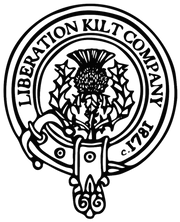Blueheart Tartan
"The Blueheart tartan is a corporate tartan endorsed by the United Nations’ Blue Heart Campaign, an international initiative to raise awareness of the plight of human trafficking victims. The campaign is coordinated by the United Nations Office of Drugs and Crime. The Blueheart tartan symbolises the collective heartbeat (light blue lines) of those who are trafficked and provides another way for people to show their solidarity against this modern form of slavery, represented in the tartan by the black lines that intersect to form a cage." Scottish Register of Tartans



Anne & Ian's Deep Dive into Human Trafficking and Modern Slavery
FAQ
What is modern slavery?
Modern slavery encompasses all forms of exploitation where individuals lose their freedom and are forced to work against their will for someone else’s gain. This includes:
- Human trafficking: Moving individuals through coercion or fraud for exploitation.
- Forced labor: Coercion to work under threats or penalties.
- Debt bondage: Work enforced to repay unpayable debts.
- Descent-based slavery: Where individuals are born into slavery.
- Forced marriage: Compulsory unions involving exploitation.
What are some key statistics?
Modern slavery is a global problem affecting every country, with 40-50 million people currently enslaved worldwide.
- Forced labor: Accounts for approximately 50% of victims, making debt bondage the most widespread form of slavery.
- Forced marriages: Trap around 37.5% of victims, often involving coercion and violence.
- Sex slavery: Represents 12.5% of victims, exposing individuals to extreme abuse.
- Economic impact: Slavery generates an estimated $150 billion annually for traffickers, exacerbating global inequality and exploitation.
Who are the most vulnerable to human trafficking?
Women and girls comprise 7 in 10 identified victims of human trafficking, although men and boys are also affected.
- Trafficked individuals: Often suffer severe psychological consequences, including anxiety disorders, PTSD, and depression.
- Sex trafficking victims: Experience high rates of violence, memory loss, STDs, and traumatic brain injuries, alongside isolation and Stockholm syndrome.
How do traffickers exert control over their victims?
Traffickers use a range of coercive tactics to maintain control:
- Force, fraud, and coercion: Core methods of entrapment.
- “Juju” rituals: Involve physical harm, consumption of unusual substances, and spiritual threats to instill fear, as documented in the Cursed podcast.
- Manipulation: Exploiting victims’ desires to support their families or escape poverty.
- Debt bondage: Accumulating false debts victims are forced to "repay."
- Passport confiscation and threats: Used to isolate and immobilize victims.
What role do criminals play in modern slavery?
Human trafficking is often facilitated by complex international networks:
- Organized crime: Criminal gangs exploit vulnerable industries like mining, as seen in South Africa, where gangs control abandoned mines and trap migrants in dangerous work conditions.
- Global trafficking hubs: The Gulf of Aden, linking the Red Sea and the Arabian Sea, illustrates how conflict and instability enable traffickers to operate with impunity. False promises lure individuals into exploitation, often perpetuated by figures like the possibly mythical "Abdul Qawi."
What are some key milestones in combating modern slavery?
- 1948: Universal Declaration of Human Rights—Article 4 prohibits slavery and servitude.
- 1956: Supplementary Convention—Targeted debt bondage, serfdom, and forced marriage.
- 2000: Palermo Protocols—Defined trafficking and emphasized victim protection.
- 2015: UK Modern Slavery Act—Introduced corporate supply chain transparency requirements.
- 2021: Global Estimates—Reported 50 million people affected globally.
- 2024: EU Corporate Sustainability Due Diligence Directive (CSDDD)—Mandates companies address human rights abuses in supply chains.
What can individuals do to help combat modern slavery?
You can:
- Support anti-slavery organizations: Volunteer, donate, or raise awareness.
- Advocate for stronger legislation: Lobby governments for tougher anti-trafficking laws.
-
Make informed consumer choices:
- Boycott goods produced through forced labor.
- Support businesses with ethical supply chains.
- Wear our Blueheart Tartan, designed to symbolize solidarity against modern slavery.
- Educate others: Share information to raise awareness.
- Report suspected cases: Contact appropriate authorities to combat trafficking locally.
Modern slavery is a multifaceted issue requiring collective action, informed choices, and global cooperation to eradicate exploitation.
UN Guide Wears Blueheart Tartan, United Nations, Vienna

